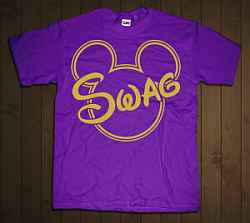FROM: The Adventures of Tom Nabbe Published Every Other Tuesday
The Adventure of the Wormy Inventory
You think working for Walt is all soda and ice cream? Ha! Tom Nabbe soon learned that his duties included not just celebrity photo ops, but also cleaning (as in gutting) fish caught by Park guests and making sure the company got every worm it paid for.
If you've read any Mark Twain, you know that Tom Sawyer was a fairly good fisherman. In Tom's time, gear was simple: a stick, string, a hook, some worms.
As Tom Sawyer, naturally, I was in charge of the fishing, and that meant doing things pretty much the way the real Tom Sawyer did them because Walt wanted the guest experience to be as realistic as possible.
First, though, let me explain what experience we were offering guests back then.
Counting Worms
Disney stocked the Rivers of America with blue gill and catfish. On each of the two piers, there were about two dozen fishing poles that guests could use to catch fish.
Really catch fish! Nothing fake about it.
One of my jobs was to make sure the poles were on the piers every morning, and that each pole had its own supply of hooks, sinkers, cork bobbers, and cans of worms.
I'd talk to guests who wanted to sit for a spell and fish from the pier. (And, of course, pose for pictures.) Many guests didn't want to bait their own hooks, so I'd have to stick the worms on the hooks for them.
My boss at the time didn't trust our worm supplier. Disney paid for worms by the flat, and each flat was supposed to have 350 worms in it. But how to know for sure?
Well, that's where I came in.
I had to dig through each flat, which was full of rabbit manure, and count each worm. I'd pull each worm out, toss it into another flat full of potting soil, and keep an inventory.
As it turned out, the flats usually contained more than 350 worms, which made my boss happy but didn't excite me one way or the other.
Cleaning Fish
As if the worms weren't enough, there was also the problem of dead fish.
In the very beginning, we had a 'catch and clean' program: guests would catch fish, I'd clean them, and then the guests could take them home. (Imagine doing that today!)
Unfortunately, some guests would change their minds, or discover that it wasn't much fun carrying dead fish through Disneyland, and so these dead fish would start turning up in places in the park where there shouldn't be any dead fish.
Disney quickly changed the 'catch and clean' program to 'catch and release'. To make that work, I had to de-barb each and every hook so that it was more difficult to catch fish and any caught fish wouldn't be injured so badly that they we couldn't throw it back in the river for someone else to catch.
Eventually, though, it all became too much trouble and the fishing stopped altogether.
Tom's adventures with Disney spanned the early days of Disneyland, his special relationship with Walt, and his five decades of work for the company. We're just getting started!
More: THE ADVENTURES OF TOM NABBE
Stuff Not to Skip
- Tom's site: Walt Hired Me
http://www.walthiredme.com - Tom Nabbe on Disney Legends
http://legends.disney.go.com/legends/detail?key=Tom+Nabbe






